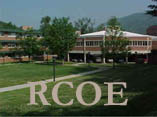Artifact # 3
Context
I completed a Literature
Circle Unit on the author Karen Hesse. I worked in a group with three
other students under the instruction of Mrs. Beth Frye and Dr. Woodrow
Trathen in a Language Arts methods course in which I was enrolled at Appalachian
State University in the Fall of 2001. The Unit was divided into four
grades, third grade through sixth grade. Our group members collaborated
for the main structure and the beginning and end of the lessons.
I created the lesson ideas and web pages for the third grade sections.
Impact
Literature Circles are
a very effective way to encourage children to discuss the literature they
read. It helps give them ownership of the work they produce.
The roles each student must complete assist in providing in-depth searches
into the stories, including aspects such as characters, setting, plot,
and vocabulary building. Because the students are grouped according
to their reading level, everyone can read books that are pre-planned for
their level. This unit can be used by teachers all over the world
because it is web-based.
Literature Circle Units relate to the North Carolina Standard Course of Study in more ways to count, especially if a teacher decides to use the strategy of integration.
Alignment
Students are encouraged,
during literature discussions to really dig deep into a story or book.
All school age children should have an opportunity to fully engross and
attach themselves to a piece(s) of literature and Literature Circles certainly
provide such opportunities. All of the roles provide opportunities
for the students to analyze and refer back to a specific section or page
of a book and locate information, which creates in-depth discussion.
Literature Circles offer such an in-depth look at books for students on
different levels and are indicative of strategies designed to help facilitate
appropriate learning opportunities that apply technology-enhanced instructional
strategies to support the diverse needs of the learners in every classroom
(Goal IIA).
My Literature Circle Unit also presents the information on-line for other teachers to search and find. Likewise, it technologically displays all of the lessons, questions and book information on the Internet, for a simple, easy- to-find and implemented plan that I can click the mouse to obtain quick access when I decide to use the plan with my students. I have used technology to support a learner-centered (the students come up with their questions, answers and vocabulary definitions) strategies that address the diverse needs of the children that will be in my classroom (Goal IIIB).
Literature Circles give students opportunities to inquire about subjects and issues arisen through the books they read. The students are required to, on their own, draw conclusions that create a learning experience like none other. Relating the literature to their own lives, the students will take away much more than from simply reading the book and writing a book report. Literate Circles have proven to encourage discussion and thought (INTASC 1).
Literature Circle Units provide learning opportunities like none other. Literature Circle Units aide in the development of well-rounded individuals that work together in the circle process to discuss, analyze, and relate to the issues of the literature (INTASC 2).
A well-planned Literature Circle Unit includes reading materials for a range of reading levels. Students in a class will rarely all be on the same reading level, and therefore, as a teacher, it is important to adapt the diverse needs of the learners. This Literature Circle Unit includes an entire unit plan for grades three through six, because there will be readers on each of these levels in a fourth grade classroom. The students will have ten sections and the higher level readers will read higher level, longer books, where as the lower level readers will read more books, but still have ten sections. This will ensure that each level of student has the opportunity to learn from this sort of literature study, while reading on their own diverse levels (INTASC 3).
Literature Circles provide
the opportunity for group and cooperative learning. The groups must
work together to function effectively. Each person in the group has
to contribute actively to the group in order to help self-motivate the
other members of that group (INTASC 5)
and for the Unit to be a success.
